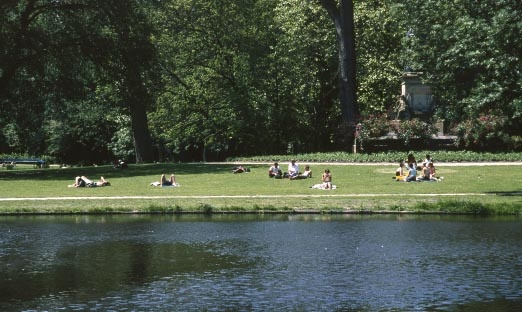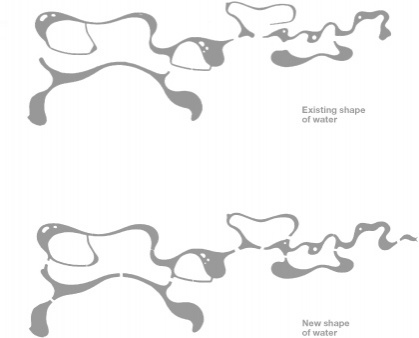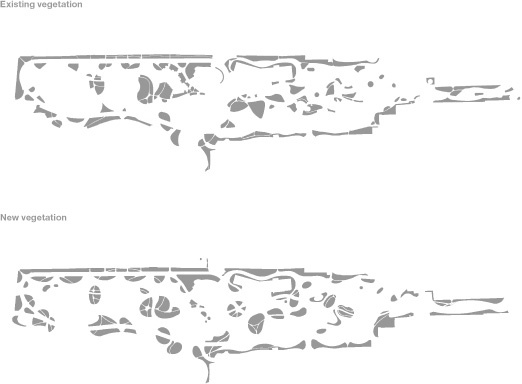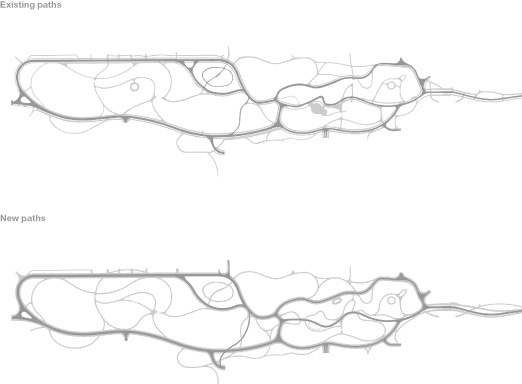

Vondelpark is the first and foremost urban park in Amsterdam. Conceived in the 19th century by wealthy and well-meaning citizens, it combined private profit with public pleasure. Stately homes surround it, enjoying the added value of a green open space that connects the city center with its western outskirts.
Renovation of the park to secure its future is based on three calibrating moments in time. Its original completion in 1896, an extensive renovation of 1959 and the designation as national landmark in 1996.

| Historical documentation provided inspiration for the plan and guidelines for its execution. |
|

| Water Water, in every shape and form, determines the structure of the Vondelpark vale that was formed after the adjacent land was raised to become a residential neighborhood. Some connections in the water system have been lost visually and are to be reinstated. This continuity is enhanced by reducing the distance between edges of paths and water. |
|

Relief
Photographs of Vondelpark made at the end of the 19th century show much more differentiation in higher and lower parts than can be seen now. Somehow, the landscape has flattened out. Only where bridges were built and foundations resist the settling of the soil, difference in ground level has actually increased. Level areas that used to be hollow next to bulging are getting that contrast back.

Vegetation
Grass, groves and trees constitute the biological framework of the park. Existing grasslands are made more diverse. Around the Vondel statue the1896 reference requires formal grass. Elsewhere, structurally loosened up top soil and newly formed slopes help to drain and use the grass after rains. Groves of shrubs, trees or both articulate the view from the park at the city around. Trees are given a longer lease on life by improving the quality of the soil they grow in.

Paths
The original circulation system of the park, defined by elegant curves, has been diminished by subsequent alterations over the years. Connections are restored, drainage is improved, avenues at the edge regain their rows of trees and the panhandle that connects the main park and city center is filled with scattered trees.
Client
City of Amsterdam
Borough Oud-Zuid
Credits
Erik de Jong
Art historian
Quirijn Verhoog
Landscape architect